I get no greater pleasure than seeing enthusiasts put cars they build with high-dollar parts onto a track and rip without a care in the world for the sole purpose of going fast and hopefully setting some personal best lap times in the process. Forget doing it for the ‘gram or these $2 plastic trophies — show us that your car is more than a catalog car. After all, isn’t "going" sometimes better than “showing”? This is why Loi-Spec Garage deserves some big time props. They don’t just build cars that look like they should be going fast; they drive the hell out of them and make sure they actually are fast.

Hailing from the Eastside of Los Angeles out in the San Gabriel Valley, Loi-Spec Garage isn’t an actual shop but more a brotherhood of guys who legitimately love to go hardcore racing. If there’s a local track event, they’re usually there instead of car meets or shows, where all of the high-end gear purchased is put to extreme use — as they should be. Sure, they care about all the Japanese rarities as the next person does, but the difference is they’re not afraid to get a little dirt on them or acquire a few battle scars while in action.
We gathered a couple of the crew’s “best” together for a few photos — though all of the Loi-Spec cars are prime specimens of racing machines, these two Integra Type Rs represent something magical: One is their best track car that occasionally sees public roads, while the other is their best “street” car that just happens to be tracked. Let’s take a deeper look at both.
The Track Master
Loi Hua (if you couldn’t tell by his name alone) is the mastermind behind the Loi-Spec namesake, and his ’01 Integra Type R is the race flagship of the group. He takes pride in putting both quality and detail into building his own cars as well as his friends.
“It has to be done correctly, like it would be from the factory,” he says. “And do it once!” Loi earned respect because of this, completing projects out of his home garage, which became the Loi-Spec Garage hangout.

This isn’t Loi’s first ITR, but it’s currently his favorite so far. You’d be mistaken if you were to peg this as a show car; this is a pure track car infused with show-quality modifications. It has been beautifully converted with an OEM Japanese Type R front end, which, to this day, is still a look that’s coveted deeply by the Honda enthusiast community. The body also sports a Wasp carbon front splitter, aluminum side skirts by PCI, a Shine Spoon rear diffuser, Voltex GT rear wing, First Molding’s carbon fiber vented hood and Flugel plate lip spoiler — all parts that serve a true purpose and are explicitly put to the test each time Loi hits a closed race course.
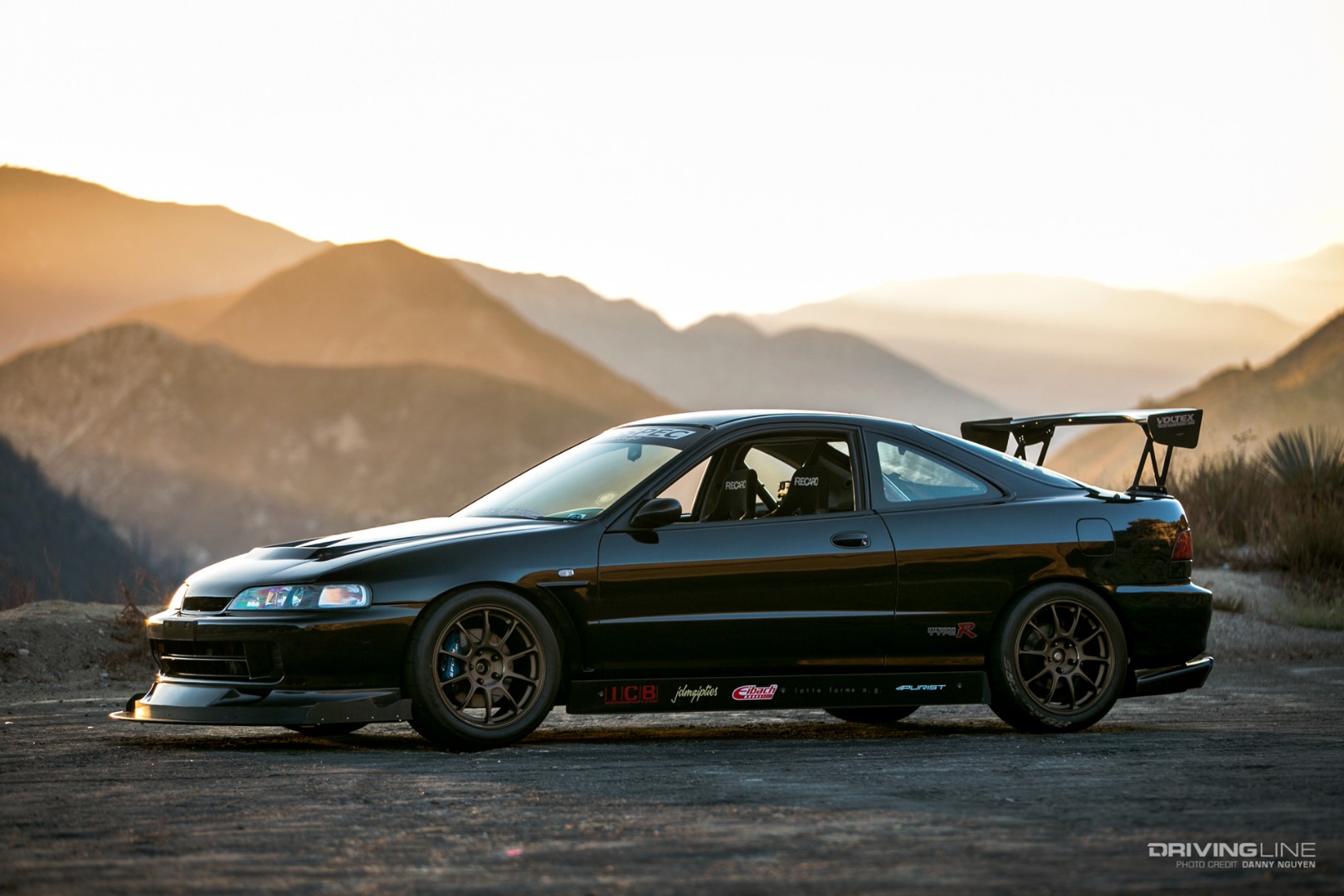
After dialing in aerodynamics, power was Loi’s next move. After maximizing what he could pull out of the original B18C5 powerplant, he opted for a newer generation, more powerful K20A2 iVTEC engine — but even that would soon prove to be insufficient. So he purchased a brand new K20Z3 Type R block to hit the reset button with, which would provide him the much-needed reliability.
Upon reassembly, Loi outfitted the K20A2 cylinder head with Blueprint Stage 2 cams, Brian Crower valve springs/retainers, then bolted on an RBC intake manifold, Skunk2 Alpha header and Hytech twin-loop exhaust to build more power with — that’s 228 whp and 150 wtq to be exact, tuned on Import Auto Pros’ Dynojet. Helping to transfer that power to the wheels is a JDM K20A Type R six-speed transmission with a 4.764 final drive, also purchased brand new, but outfitted with an OS Giken one-way limited slip differential, lightweight Exedy flywheel and an ACT 6-puck sprung disc clutch.
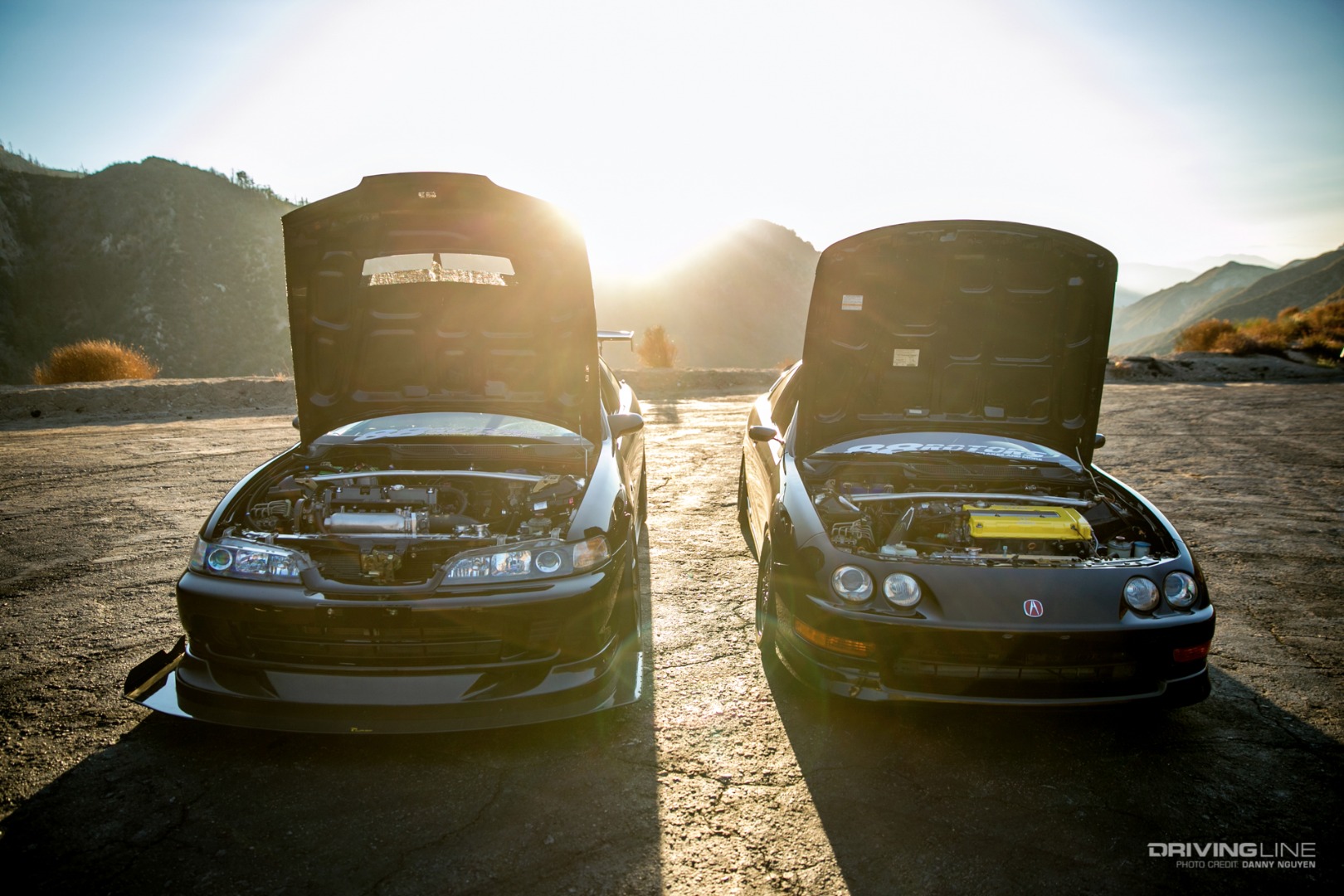
However, power and looks aren’t much without a properly tuned suspension, and here, Loi spared no expense in choosing the best. He selected Eibach for its famed R2 Multi-Pro two-way adjustable coilovers (set with 850-pound front/rear springs) and spherical rear toe arms. PCI front camber arms, Special Projects Motorsport spherical rear camber arms and a 32 mm ASR anti-roll bar work together to further enhance the ITR chassis, as do the various PCI bushings aid in stiffening it.

For braking improvement, Loi added Spoon Sports 4-piston monoblock front brake calipers, 300 mm 88 Rotors slotted front/rear brake rotors, Winmax pads and Goodridge stainless brake lines. Large 17-inch Volk Racing ZE40s (though they don’t come any smaller than 17-inch) are wrapped with Nitto Tire NT01 rubber to provide maximum grip both on street pavement and race tarmac.
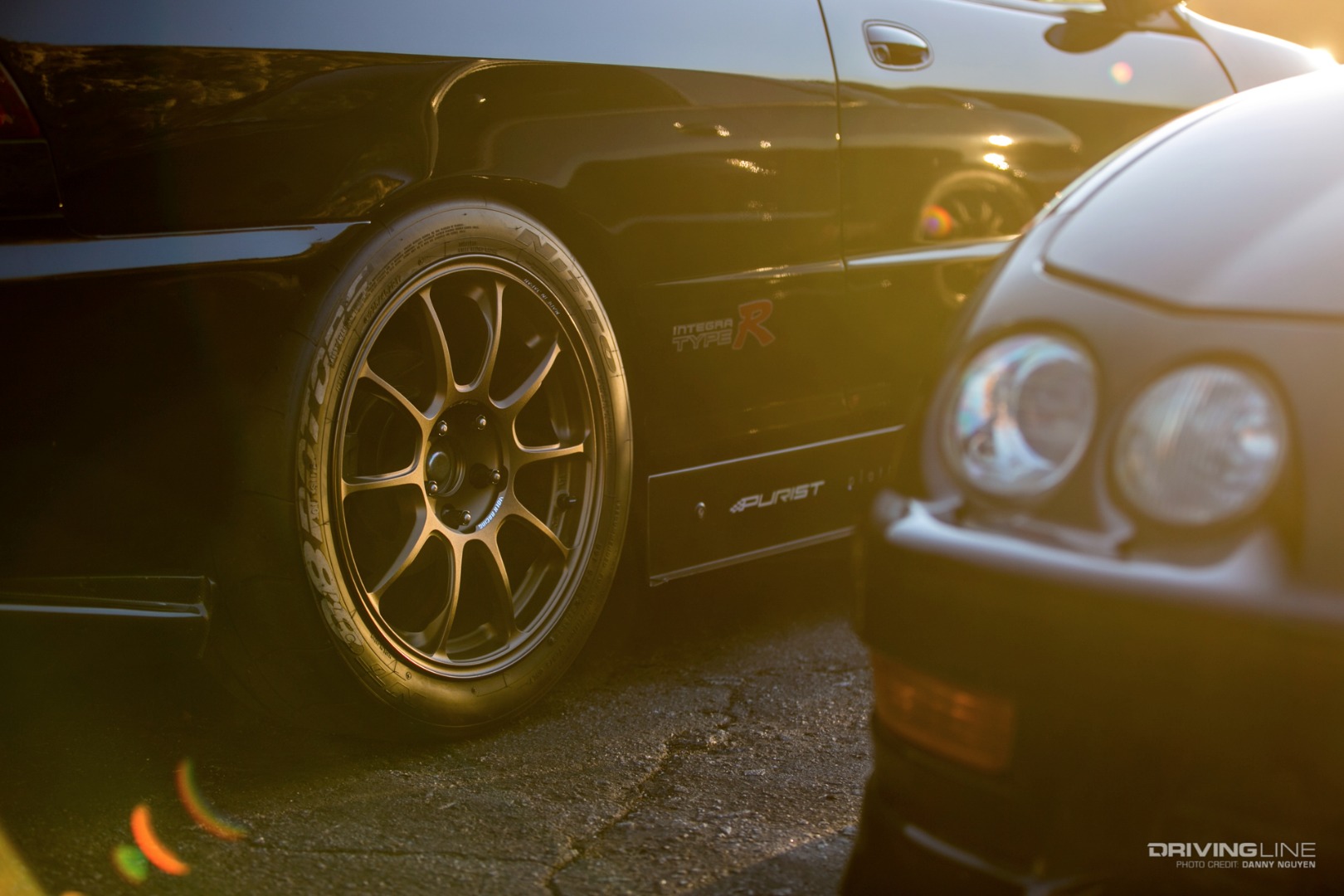
The ITR’s interior shows very clear signs of Japanese and American mods that are destined for racing action. To keep him (and a passenger) planted securely are a pair of Recaro Profi SPG seats mated to Mugen seat rails and equipped with Schroth harnesses and custom Loi-Spec seat bolster protectors. A Type 3 Mugen steering wheel is easily detached via a Works Bell Rapfix quick-release, and Spoon Sports parts include a rare 98-spec gauge cluster, rear view mirror and Duracon shift knob affixed to a K-Tuned billet shifter. An AutoPower 4-point roll bar provides further chassis stiffening, and various AEM gauges keep Loi alert to engine function at all times.
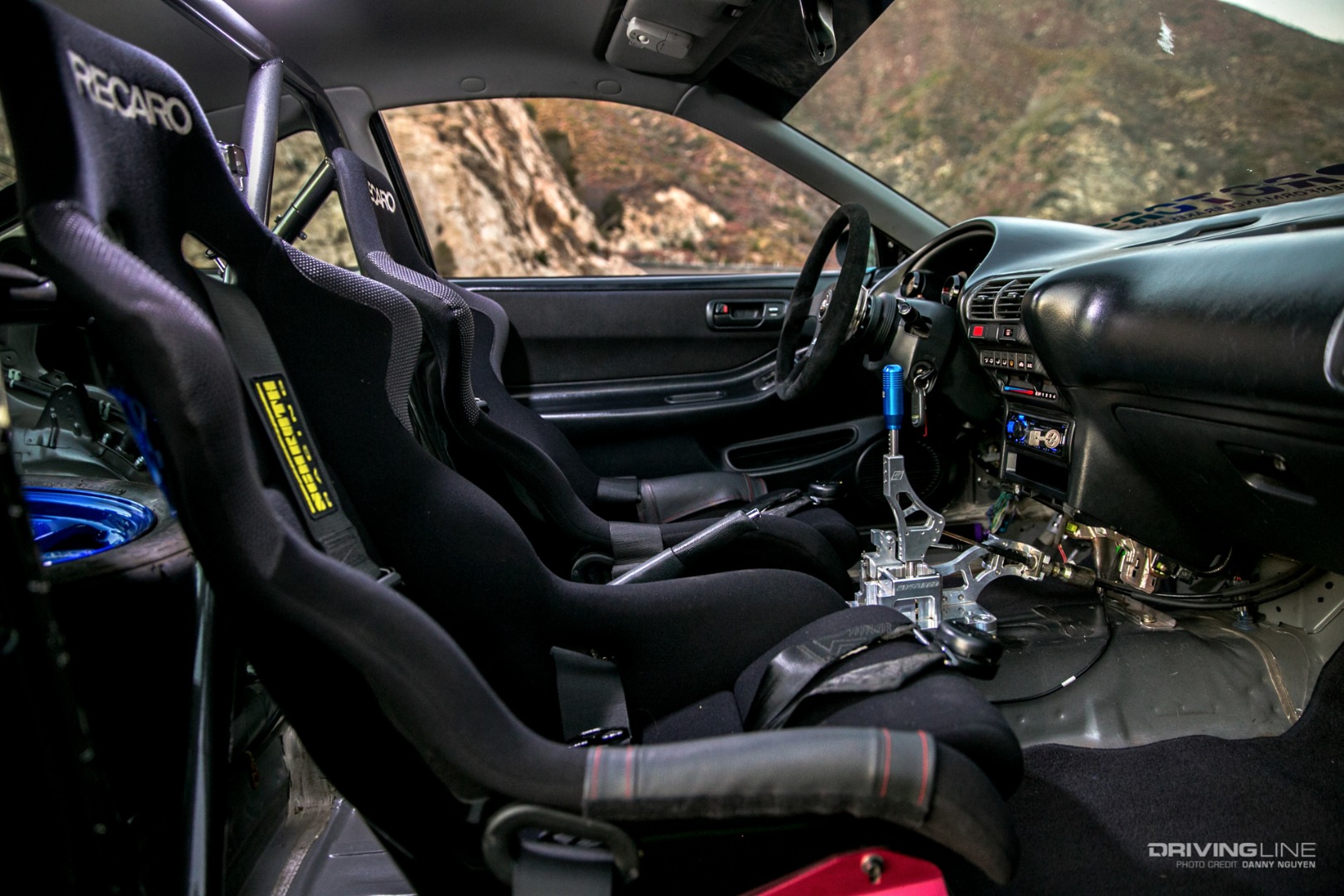
What Street Dreams Are Made Of
Kevin Lee is cut from a different cloth than Loi. Instead of building the best track car he could, he wanted to build a clean street-version ITR. But Southern California and ITRs don’t always work to your advantage, as these type of cars (as are most Hondas) are prone to theft — which is what prevented Kevin from building one in the first place: fear of having it stolen. But as chance would have it, after many years of searching, he finally found a bone-stock 2000 model, a rarity in itself.
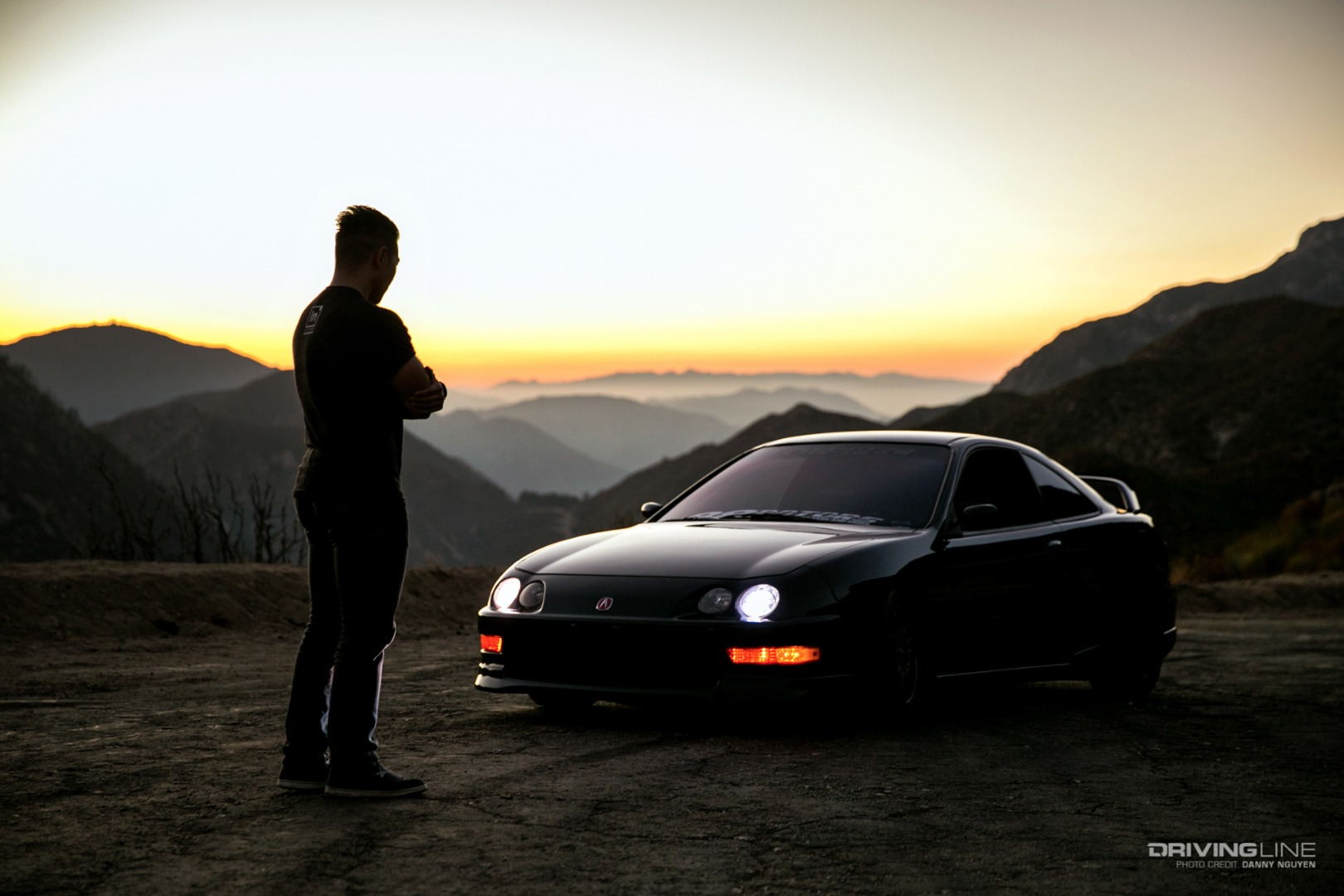
Kevin used this opportunity to build his era-specific ITR by keeping it as close to factory as possible: Only a few personal touches, and go enjoy it every once in a blue moon on the track.
“Drive the car the way it was designed to do,” he says. And if the mission is to go light on modifications, that’s all too easy. The original B18C5 is one of Honda’s best production VTEC engines made, but Kevin’s has been upgraded with a 70 mm Skunk2 throttle body, AEM intake, Spoon Sports header and Hytech exhaust. The factory red valve cover was also swapped for a yellow Spoon valve cover. The factory LSD-equpped transmission remains intact, save for all its bearings replaced for preventative maintenance.
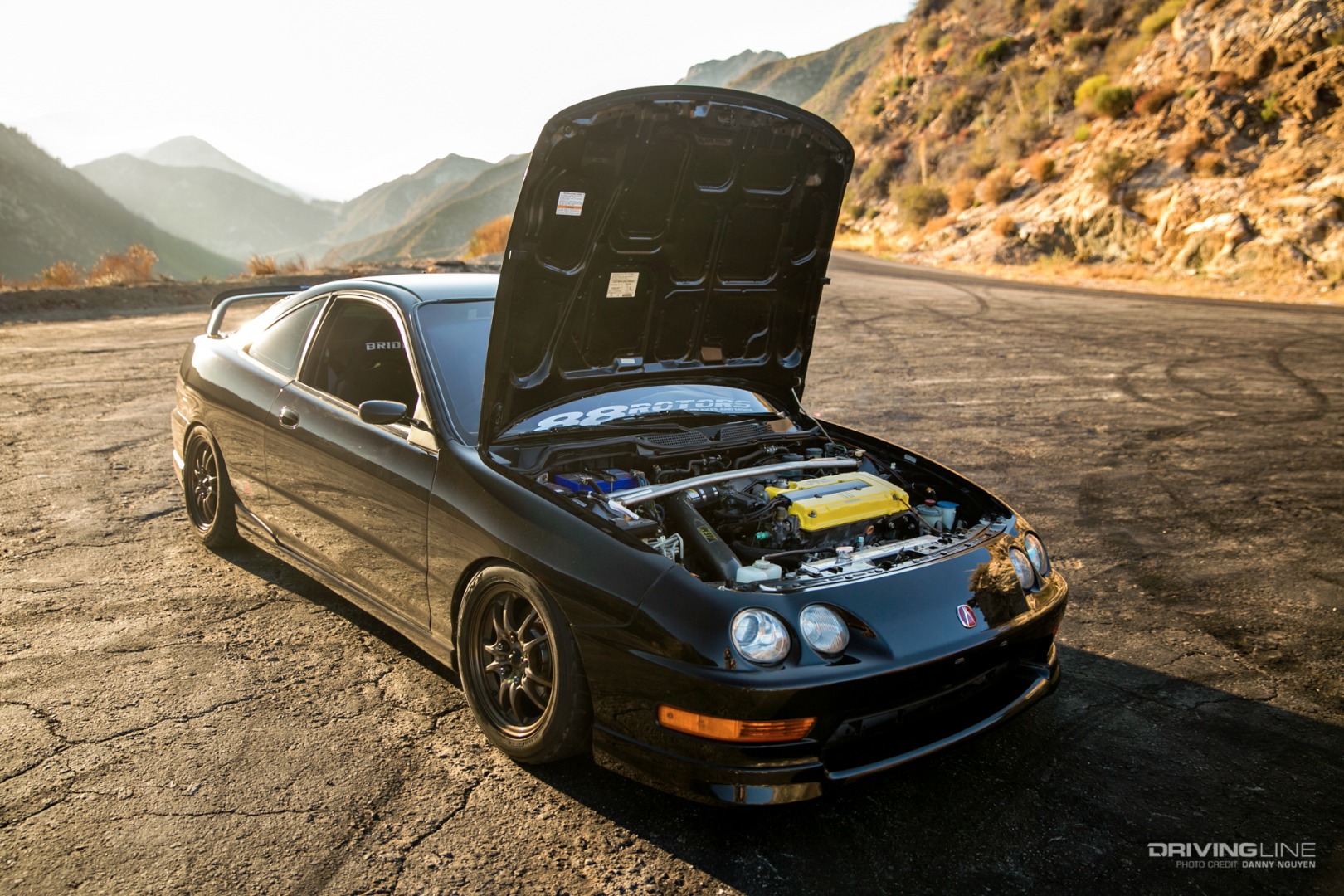
Exterior-wise, this ITR is all USDM-spec original, a vast difference in comparison to the JDM version with its round headlights, and Kevin was able to source the optional OEM side skirts and rear valance. Mugen’s MF10 wheels are the perfect complement, sized 15x7 with a +43 offset, and have been coupled with a set of Nitto NT05 tires. The car sits at a modest ride height after installing a set of Zeal Function X coilovers, while it sees other suspension enhancements through adding Skunk2 front/rear camber arms, a DC Sports rear strut bar and a second-generation Mugen front strut tower bar.
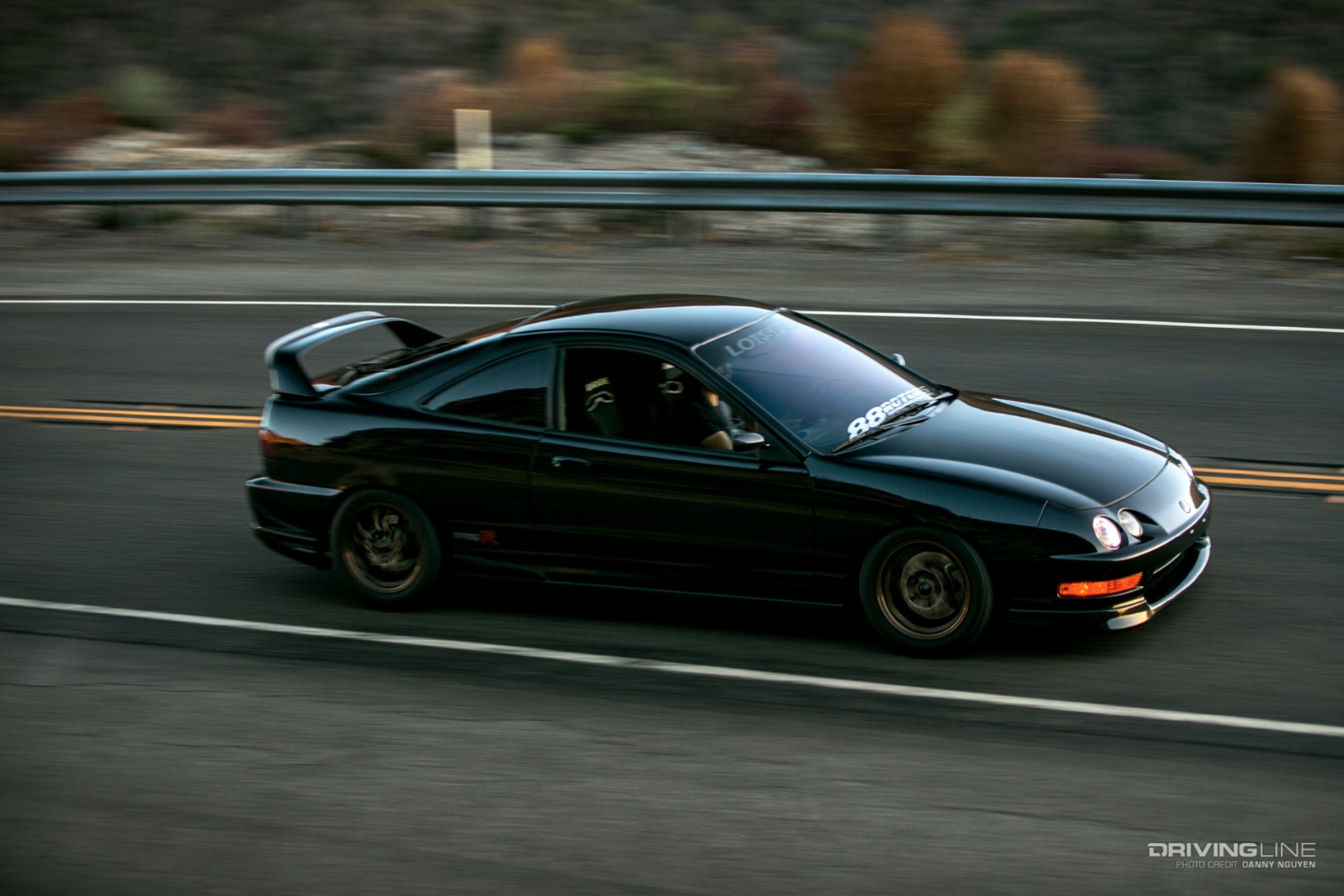
The Integra Type R needs little, if any, upgrades to the interior, though luckily, it won't take much to make it that much sexier. The factory steering wheel and shift knob were set aside to make way for Spoon replacements, and the front seats were put into storage so that Kevin could add a Bride Zeta III driver bucket and a reclining Bride Ergo II for his passenger. Only the factory audio suffers, so he installed an Alpine head unit, speakers and a 10-inch subwoofer.

Two varying degrees of Integra Type Rs from the Loi-Spec Garage: which would you prefer to do damage with? See more in the photo gallery below.
(Photos: Danny Nguyen/JDMZipTies)